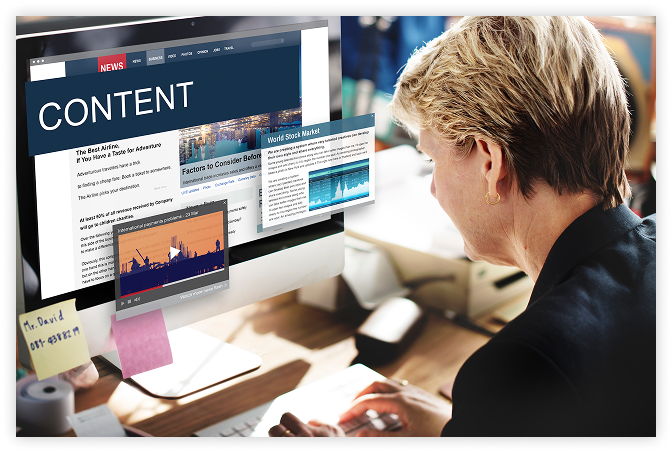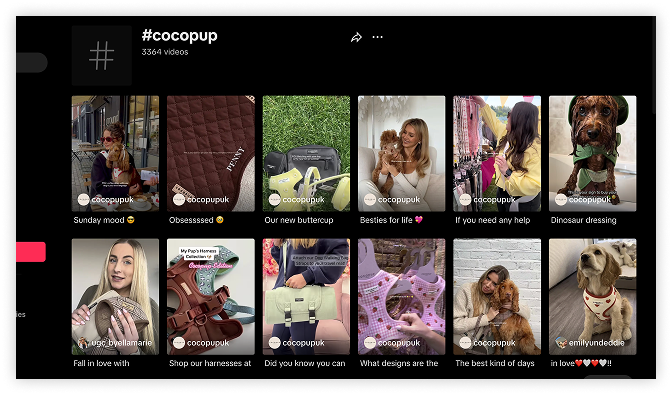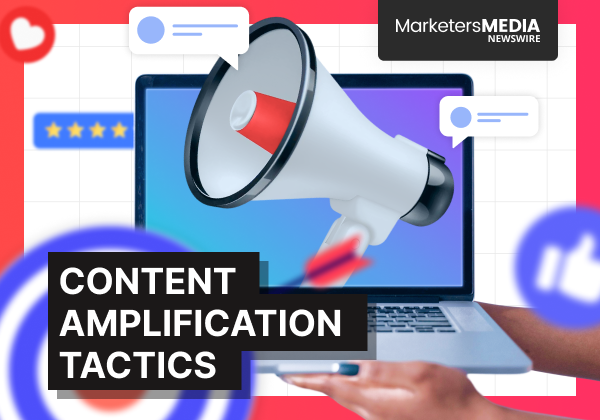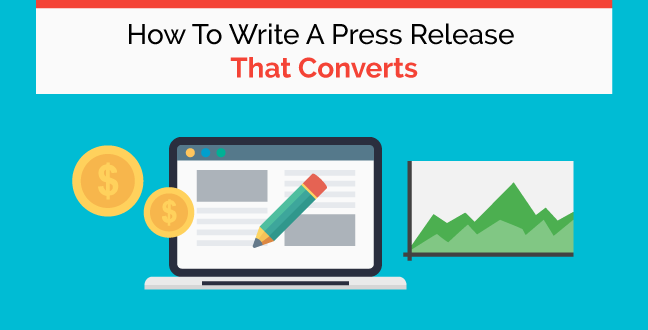Table of Content
- A Closer Look at Content Amplification
- Why Content Amplification Matters
- How Content Amplification Works
- The Three Pillars of Content Amplification
- The Strategic Role of PR in Content Amplification
- Real-World Success Stories
- Essential Content Amplification Platforms
- How PR Distribution Can Help with Content Amplification
The digital space is overflowing with content—that even the most brilliant ideas can disappear without active promotion. Creating great content is only half the battle. The other half? Making sure people actually see it.
That's where content amplification comes in. It acts as a bridge that connects your creation to audience reach and results.
A Closer Look at Content Amplification

At its core, content amplification is about pushing your content beyond its initial posting and turning it into a strategic brand asset that delivers measurable results—by actively promoting it to a wider, targeted audience through multiple channels and tactics.
The process goes far beyond simply posting a blog article on social media. Instead, effective content amplification requires thoughtful planning at every stage.
Why Content Amplification Matters
Consider this: you've spent hours researching, writing, and perfecting a piece of content. You hit publish and wait for the views to roll in. Meanwhile, your competitor posts something minutes later and racks in thousands of views almost instantly—because they knew how to amplify.
That's content amplification at play. Not only does it get your work seen, it also solves several critical business challenges:
- Maximizes your content ROI: Ensures your investment in content delivers maximum returns by reaching its intended audience rather than relying on organic discovery.
- Grows your audience faster: Expands reach to new audiences through syndication on trusted third-party platforms or work with influencers.
- Builds brand authority: Consistent visibility across channels reinforces your expertise and keeps your brand top-of-mind.
- Provides measurable results: Tracks exactly which channels drive traffic, generate leads, and convert prospects into customers.
The bottom line? In a world where millions of content get published daily, amplification is what separates successful content from being buried in the feed.
Go From 'Overlooked' to 'In-Demand'
Find out what’s blocking your PR success—and how to change it fast.



How Content Amplification Works
To avoid that fate, you'll need to take a systematic approach that starts with understanding your audience and ends with continuous optimization.
Step 1: Know your audience inside and out
Before amplifying anything, you need to understand who you're trying to reach. This goes beyond basic demographics to include their online behavior, preferred platforms, and content consumption habits.
Step 2: Create content worth amplifying
The best content to amplify should resonate deeply with your target audience and provides genuine value. It should be compelling enough that people want to share it naturally.
Step 3: Choose your amplification channels
Different platforms require different approaches. Your LinkedIn audience expects professional insights, while your TikTok viewers want quick, entertaining content. Tailor your message to each platform's unique context and user expectations.
Step 4: Execute across multiple touchpoints
Send your content to email subscribers, share it on social media, pitch it to journalists, and consider paid promotion. The goal is coordinated exposure across channels where your audience already spends time.
Step 5: Measure and optimize
Track performance across all channels to understand what works. Use tools like Google Analytics to see which channels drive the most qualified traffic and adjust your strategy accordingly.
The Three Pillars of Content Amplification
The most successful amplification campaigns combine organic reach with strategic paid promotion and earned media coverage—each serving a distinct purpose in your strategy.

- Owned Media: Key tactics include optimizing SEO, sending newsletters, and sharing across your social channels. The advantage? You control the message and timing completely.
- Paid Media: Reach specific audiences instantly through ads, influencer partnerships, and sponsored content tailored to their interests and behavior.
- Earned Media: This includes media coverage, social shares, guest posting opportunities, and content syndication from trusted sources that act as endorsements for your brand.
Curious about how these three media types work together? We’ve got another article for you, check out our PESO Model guide.
The Strategic Role of PR in Content Amplification
Today, press releases function as versatile content amplification tools when weaved in with owned, paid, and earned channels.
Press releases as owned media assets. Host them on your blog or newsroom. This creates a permanent, searchable SEO asset on your website that provides easy access for anyone researching your company.
Paid amplification for press releases. Many distribution services now offer paid placement via native ads to guarantee views and reach a baseline audience, even without traditional media pickup.
Earned media through press coverage. Building relationships with reporters and providing genuinely newsworthy content can earn you coverage that amplifies your message through trusted media sources.
The key is creating press releases that serve all three functions. Write newsworthy content that journalists want to cover, optimize it for search engines, and consider paid promotion to guarantee visibility.
Real-World Success Stories
Bloomreach's Targeted Paid Media Strategy
Bloomreach, an e-commerce personalization platform, implemented a multi-channel paid media strategy to enhance brand awareness.
Their targeted approach resulted in 10% of their target account list transitioning from "unaware" to "aware" and generated 13 million impressions, ultimately surpassing their campaign goals by 30%. The success of the campaign came from strategic deployment of their paid media investments rather than broad, unfocused spending.
Dropbox's Employer Brand Campaign

Facing challenges attracting top talent in competitive tech markets, Dropbox launched a talent campaign focused on their employer brand story, highlighting their mission-driven culture of autonomy, flexibility, and diversity.
The campaign resulted in a 7% increase in market perception, improved their Glassdoor rating from 3.7 to 4.5, and earned recognition as a top remote workplace.
Cocopup's User-Generated Content Strategy

Cocopup significantly grew their TikTok visibility by encouraging customers to share videos featuring their pets using the branded hashtag #cocopup.
This strategy transformed loyal customers into content creators, producing authentic user-generated content that achieved widespread organic amplification.
Essential Content Amplification Platforms
The right tools can streamline your amplification efforts and provide valuable insights into what's working.
Social Media Management
These tools help schedule content across multiple platforms and analyze performance. They prevent the "post and pray" approach by identifying optimal posting times, track engagement patterns, and measure results across networks.
Email Marketing
Professional email platforms enable sophisticated audience segmentation and automation. You can send targeted content to specific subscriber groups based on their interests, behavior, and engagement history, while tracking open rates and click-through performance.
SEO and Content Intelligence
These platforms identify trending topics and show you the most shared content in your niche. They offer competitor analysis and content gap insights to shape your strategy and create content that resonates with audiences.
Influencer and Media Outreach
Relationship management tools help organize and track your outreach to journalists and influencers. They streamline communication, track response rates, and help build the ongoing relationships necessary for earned media coverage.
Analytics and Measurement
Comprehensive analytics platforms track how amplification drives traffic, conversions, and other business outcomes. Most social media platforms also provide native analytics to measure engagement, reach, and audience growth.
Employee Advocacy
These specialized tools make it easy for employees to share company content on their personal social networks. They provide pre-approved content, track sharing activity, and extend your organic reach through trusted connections.
How PR Distribution Can Help with Content Amplification
Many distribution services now offer guaranteed placement options and detailed analytics. You can see exactly where your press release was published, how many people viewed it, and what actions they took afterward.
The combination of broad reach and detailed targeting makes professional distribution services a valuable component of any comprehensive content amplification strategy.
Distribution services like MarketersMEDIA Newswire provide the infrastructure to get your press releases in front of the right audiences quickly and efficiently.
These services offer several amplification advantages. They have established relationships with media outlets across industries. This means your news reaches decision-makers who might not see it otherwise.
Start Building Your Content Amplification Strategy
Effective content amplification starts with clear goals and a deep understanding of your audience. Create content worth sharing, plan its distribution across the right channels, and tailor it for each platform. Track performance, refine your approach, and focus resources on what works.
Remember that effective content amplification is a marathon, not a sprint. If done strategically, amplification can turn your content into a revenue-driving asset that reaches the right people and delivers measurable results.
Free Press Release Template
Tell us where to send your PDF:







